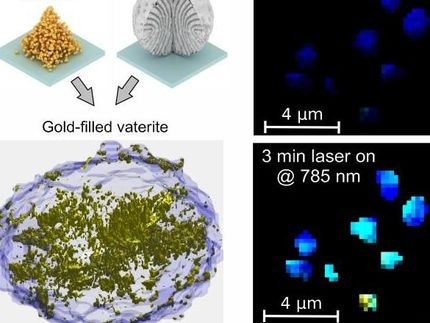Scientists moving closer to 'artificial noses'
More than one nanostring to their bow
Quick, certain and cheap detection of single molecules is a task that chemical analysts are now expected to perform. Luckily, there is a method they can employ for this, which uses nanotechnology: Specifically, they use "nano-electromechanical systems", or NEMS. These systems involve strings with diameters of the order of 100 nanometers which can be excited to resonate in a characteristic fashion. If these strings are coated with the right kind of chemicals, then molecules will dock onto them. More specifically: only one kind of molecule can dock onto each string. When a molecule docks onto a string, the string becomes heavier and its oscillation slows down a tiny bit. "By measuring the period of oscillation, we could therefore detect chemical substances with molecular precision," explains Quirin Unterreithmeier, Ludwig Maximilians University of Munich. "Ideally, you would have several thousand strings sitting on a chip the size of a fingernail, each one for highly specifically recognizing a single molecule - so you could build an extremely sensitive 'artificial nose', for example."
Until recently, however, getting such systems to work has proven technically difficult; one problem being to produce and measure the oscillations. While the nanostrings can be made to oscillate by magnetomechanical, piezoelectric or electrothermal excitement, this only works if the nanostrings are made of metal, or are at least metal-coated, which in turn greatly dampens the oscillations, preventing sensitive measurement. That hardly allows the detection of a single molecule. It also makes it harder to distinguish the different signals from differently oscillating strings.
The newly developed method now avoids these difficulties. Quirin Unterreithmeier, Dr. Eva Weig and Professor Jörg Kotthaus of the Center for NanoScience (CeNS), the Faculty of Physics of LMU Munich and the cluster of excellence "Nanosystems Initiative Munich (NIM)" have constructed an NEMS in which the nanostrings are excited individually by dielectric interaction - the same phenomenon that makes hair stand on end in winter. Following this physical principle, the nanostrings, which are made of electrically non-conducting silicon nitride, are excited to resonate when exposed to an oscillating inhomogeneous electric field, and their vibration then measured.
The alternating electric field required for this stimulation was produced between two gold electrodes right up close to the string. The oscillations were measured by two other electrodes. "We created this setup using etching techniques," reports Weig. "But this was easily done - even repeated ten thousand times on a chip. The only thing to do now is to make sure the strings can be individually addressed by a suitable circuit." All in all, this ought to be a technically easy exercise - but one that will allow a breakthrough in chemical analysis. Yet there are even more applications that can be seen beyond this "artificial nose". Among other things, the nanostrings could be employed as the pulse generators in mobile phone clocks, for example. These novel resonators could even be used as ultra-sharp electrical signal filters in metrological systems.
Original publication: Quirin P. Unterreithmeier, Eva M. Weig, Jörg P. Kotthaus; "Universal transduction scheme for nanomechanical systems based on dielectric forces"; Nature, 23 April 2009
Topics
Organizations
Other news from the department science
These products might interest you
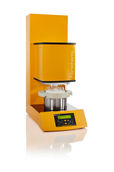
FIBRETHERM by C. Gerhardt
Automatic Fibre Extraction for Feed Analysis
FIBRETHERM from C. Gerhardt: Efficient – Precise – Method-Compliant
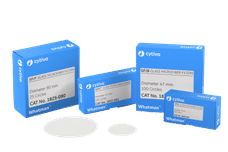
Glass and quartz microfiber filter by Cytiva
Request a glass microfiber sample pack to meet your battery development needs
Delivering efficient and consistent results
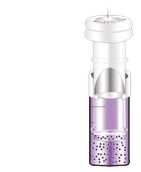
Mini-UniPrep™ by Cytiva
Improved HPLC Sample Preparation
Save 66 % sample preparation time and reduce costs by 40 %
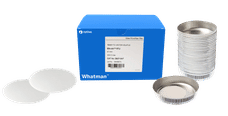
GF/C and 934-AH RTU (Environmental) by Cytiva
Meet wastewater regulations with the right filter
Streamline lab operations and ensure high-quality results

Hahnemühle LifeScience Catalogue Industry & Laboratory by Hahnemühle
Wide variety of Filter Papers for all Laboratory and Industrial Applications
Filtration Solutions in the Life Sciences, Chemical and Pharmaceutical Sectors

VICI Jour Katalog 15INT by VICI
The VICI Jour Catalog - Accessories for (U)HPLC and Liquid Handling
Capillaries, Tubing, Fittings, Filters, Safety-Products, Tools and much more

Whatman filtration product guide by Cytiva
New filtration catalog - a wealth of information on 286 pages
Discover the perfect filters for your laboratory application

Get the chemical industry in your inbox
By submitting this form you agree that LUMITOS AG will send you the newsletter(s) selected above by email. Your data will not be passed on to third parties. Your data will be stored and processed in accordance with our data protection regulations. LUMITOS may contact you by email for the purpose of advertising or market and opinion surveys. You can revoke your consent at any time without giving reasons to LUMITOS AG, Ernst-Augustin-Str. 2, 12489 Berlin, Germany or by e-mail at revoke@lumitos.com with effect for the future. In addition, each email contains a link to unsubscribe from the corresponding newsletter.
